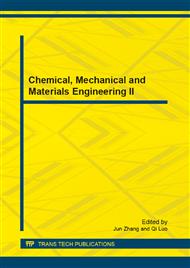p.572
p.579
p.583
p.590
p.599
p.605
p.610
p.616
p.622
A Computational Analysis of Flow Field in Twin-Track Subway Tunnel to Improve Air Quality
Abstract:
A computational model of existing Seoul subway tunnelwas analyzed in this research. The computational model was comprised of one natural ventilationshaft, two mechanical ventilationshafts, one mechanical airsupply, a twin-track tunnel, and a train. Understanding the flow pattern of the train-induced airflow in the tunnel was necessary to improve ventilation performance. The research objective wasto improve the air quality in the tunnel by investigating train-induced airflow in the twin-track subway tunnel numerically. The numerical analysis characterized the aerodynamic behavior and performance of the ventilation system by solving three-dimensional turbulent Reynolds-averaged Navier-Stokes equations. ANSYS CFX software was used for the computations. The ventilation and aerodynamic characteristics in the tunnel were investigated by analyzing the mass flowrateat the exits of the ventilation mechanicalshafts. As the train passed the mechanical ventilation shafts, the amount of discharged-air in the ventilationshafts decreased rapidly. The air at the exits of the ventilation shafts was gradually recovered with time, after the train passed the ventilation shafts. The developed mechanical air-supply for discharging dusty air and supplying clean airwas investigated.The computational results showed that the developed mechanical air-supplycould improve the air quality in the tunnel.
Info:
Periodical:
Pages:
599-604
Citation:
Online since:
May 2013
Authors:
Price:
Сopyright:
© 2013 Trans Tech Publications Ltd. All Rights Reserved
Share:
Citation:


